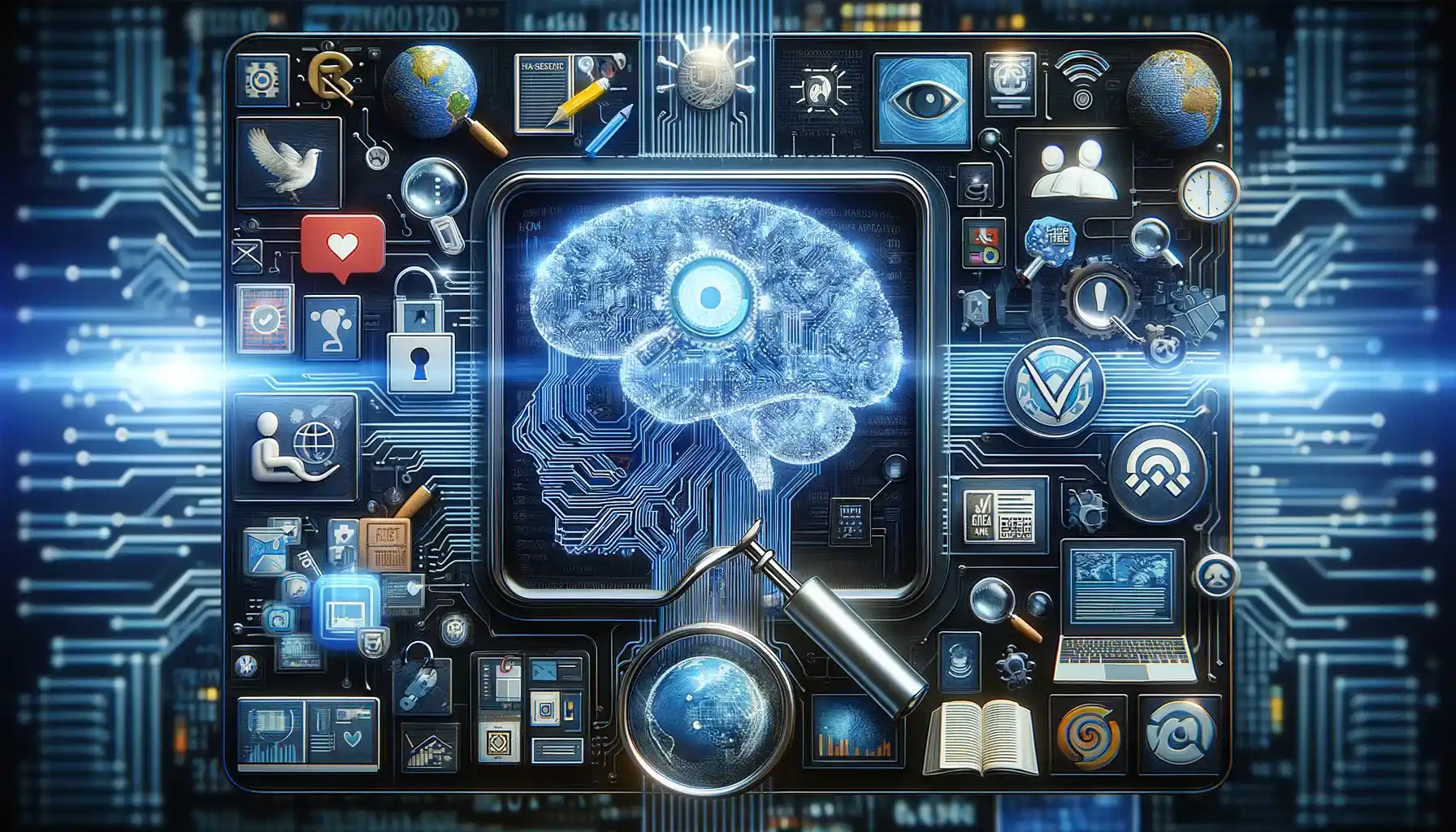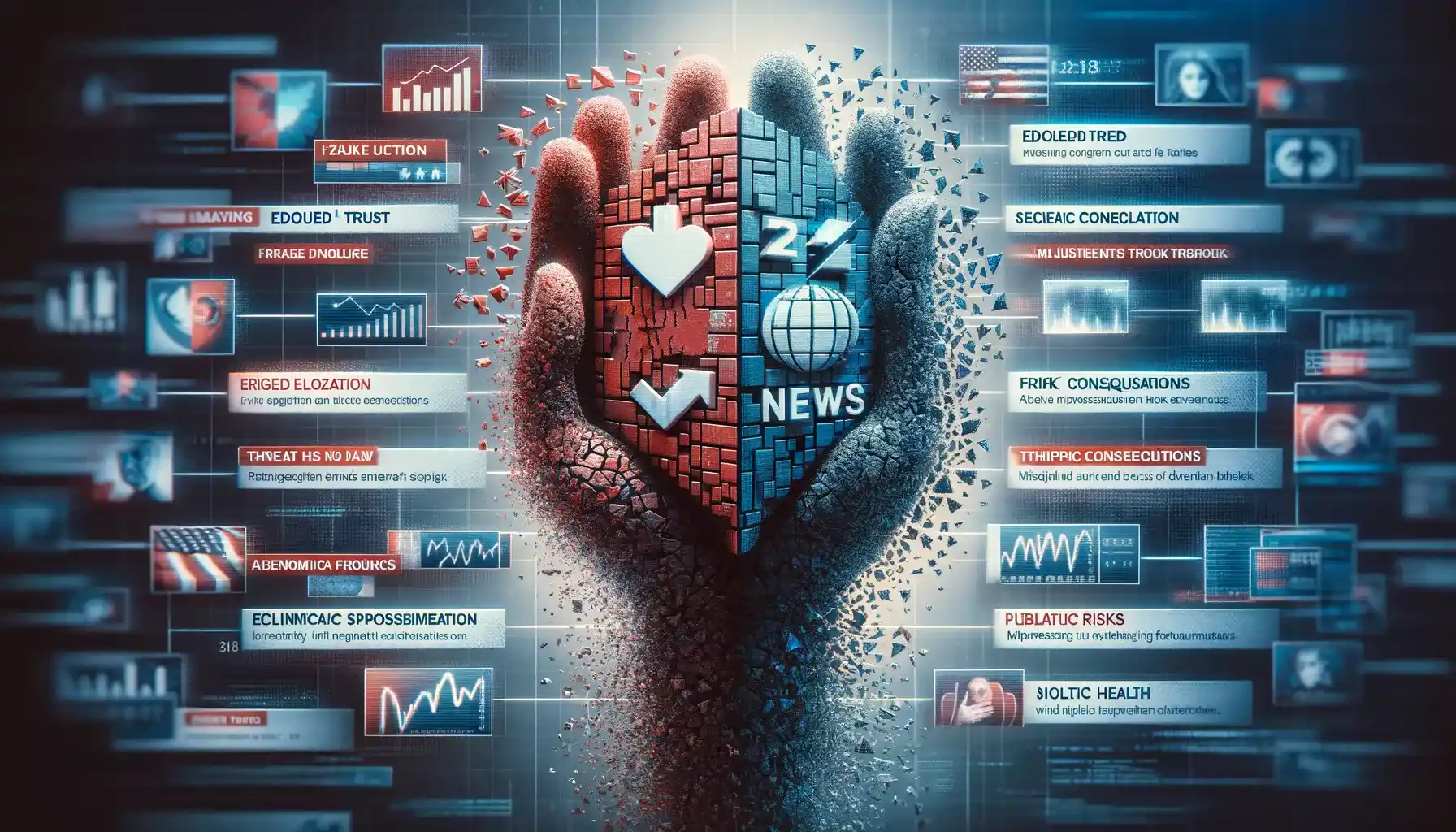Table of Contents
In an era dominated by digital information, the rise of AI-generated fake news has become a pervasive threat to society. From influencing political elections to spreading misinformation about health crises, fake news algorithms are adept at creating deceptive content that mimics legitimate news sources. This epidemic undermines trust in traditional media, fuels polarization, and poses significant risks to democracy and public health.
To combat this growing menace, it’s imperative to understand the impact of AI-generated news and implement effective strategies to counter its spread. By exploring real-world illustrations and analyzing the far-reaching consequences, we can develop informed solutions to safeguard the integrity of information and preserve societal trust in the digital age.

The Proliferation of AI-generated Fake News
The proliferation of AI-generated faux news represents a significant challenge in the digital age. Advanced algorithms enable the creation of deceptive content that closely resembles genuine news articles, including text, images, and videos. This realism makes it difficult for users to distinguish between real and fake information, especially as AI-generated fake news spreads rapidly across social media platforms and online forums.
The consequences of this dissemination are far-reaching, ranging from damaging reputations to exacerbating societal tensions and even inciting violence in extreme cases. As such, addressing the spread of AI-generated fake news is crucial to maintaining the integrity of information ecosystems and safeguarding against the harmful impacts of misinformation.
Election Interference: During the 2020 U.S. presidential election, AI-generated news flooded social media platforms, aiming to influence voters’ perceptions and sway election outcomes. For instance, fake news articles falsely claimed that certain candidates were involved in criminal activities or had hidden agendas. These misleading narratives fueled polarization and undermined the integrity of the electoral process.
Health Misinformation: Amid the COVID-19 pandemic, AI-generated news proliferated, spreading misinformation about the virus, vaccines, and public health measures. For instance, fake news articles promoted unproven treatments, downplayed the severity of the pandemic, and spread conspiracy theories about the origin of the virus. This misinformation eroded public trust in health authorities, leading to vaccine hesitancy and hindering efforts to control the spread of the virus.
The Impact of AI-Generated Fake News
The proliferation of AI-generated fake news has far-reaching consequences across various sectors:

- Erosion of Trust: Fake news undermines trust in traditional media outlets, government institutions, and authoritative sources of information. When individuals are exposed to misleading or fabricated content regularly, they become more skeptical and cynical, making it challenging to discern truth from falsehood.
- Polarization: Fake news exacerbates societal divisions by reinforcing existing biases and beliefs. Individuals who encounter fake news that aligns with their worldview are more likely to accept it uncritically, further entrenching ideological divides and hindering constructive dialogue.
- Threat to Democracy: In democratic societies, an informed electorate is essential for the functioning of representative governance. AI-generated fake news threatens the democratic process by distorting public discourse, influencing electoral outcomes, and undermining the legitimacy of elected leaders.
- Economic Consequences: The spread of AI-generated pretend news can have significant economic repercussions, including market volatility, loss of investor confidence, and damage to brand reputation. Businesses may incur financial losses due to misinformation-driven stock fluctuations or reputational damage resulting from false narratives.
- Public Health Risks: Misinformation propagated through AI-generated mock news poses public health risks by discouraging adherence to evidence-based health guidelines, promoting ineffective treatments, and fostering vaccine hesitancy. This misinformation hampers efforts to combat infectious diseases and protect public health.
Combatting AI-Generated Fake News
Addressing the epidemic of AI-generated faux news requires a multifaceted approach involving technological innovations, regulatory interventions, media literacy initiatives, and stakeholder collaboration. Some strategies to combat AI-generated phony news include:
- Algorithmic Detection: Develop AI-powered algorithms capable of identifying and flagging fake news content before it spreads widely. These algorithms can analyze linguistic patterns, semantic inconsistencies, and source credibility to distinguish between genuine and fake information.
- Fact-Checking Initiatives: Invest in fact-checking organizations and initiatives that verify the accuracy of news stories and debunk false claims. Collaborate with social media platforms and search engines to promote fact-checked content and suppress fake news.
- Media Literacy Education: Promoting media literacy and critical thinking skills empowers individuals to discern between credible and deceptive information online. Educational initiatives should teach students and the general public how to evaluate sources, fact-check information, and recognize common misinformation tactics. Educate the public about the dangers of AI-generated pretend news and teach critical thinking skills to evaluate information critically. Incorporate media literacy education into school curricula, community outreach programs, and online resources to empower individuals to discern truth from falsehood.
- Transparency and Accountability: Promote transparency in AI algorithms and ensure accountability for platforms that host and disseminate fake news content. Require social media companies to disclose their content moderation policies, algorithmic ranking criteria, and efforts to combat misinformation.
- International Cooperation: Foster collaboration among governments, tech companies, civil society organizations, and academic institutions to address the global challenge of AI-generated bogus news.
- Technological Solutions: What specific technological advancements or innovations can be used to detect and counter AI-generated fake news in real time?

Conclusion
The proliferation of AI-generated bogus news represents a complex and formidable challenge that demands a multifaceted response. Society must grasp the intricate dynamics underlying the creation, dissemination, and impact of misinformation facilitated by artificial intelligence. By comprehensively understanding these aspects, stakeholders can devise robust strategies aimed at curbing the spread of false narratives and preserving the integrity of public discourse.
Media literacy education plays a crucial role in empowering individuals to evaluate information and discern credible sources from misinformation critically. Additionally, the development and implementation of technological solutions, such as AI-based detection algorithms and fact-checking tools, can help identify and mitigate the dissemination of fake news. Moreover, regulatory interventions may be necessary to hold purveyors of misinformation accountable and establish standards for responsible content dissemination.
By adopting a collaborative approach that combines education, technology, and regulation, society can effectively combat the menace of AI-generated fake news. Upholding the principles of truth, transparency, and democratic governance is paramount in safeguarding public trust and fostering a well-informed citizenry capable of navigating the complexities of the modern information landscape.